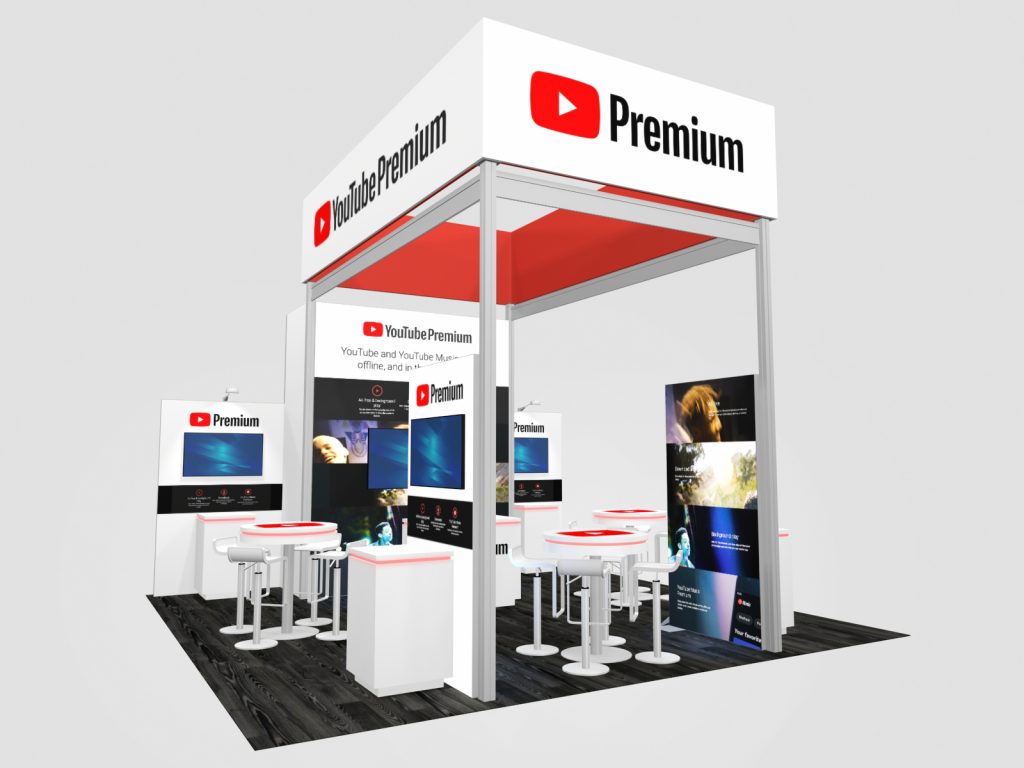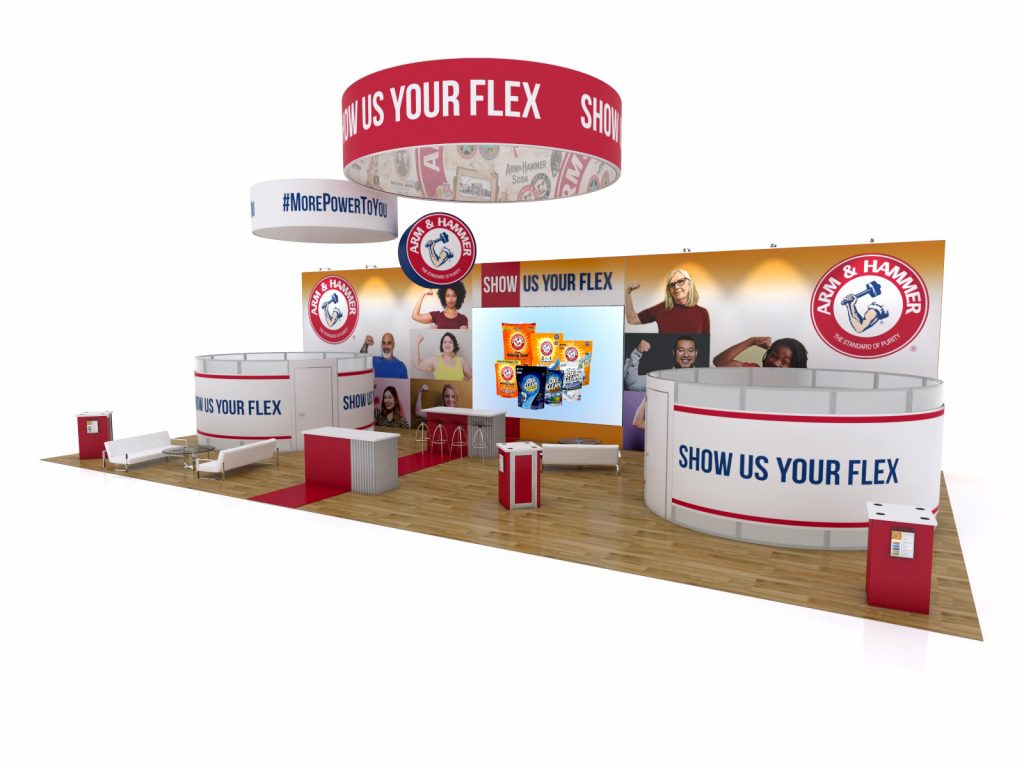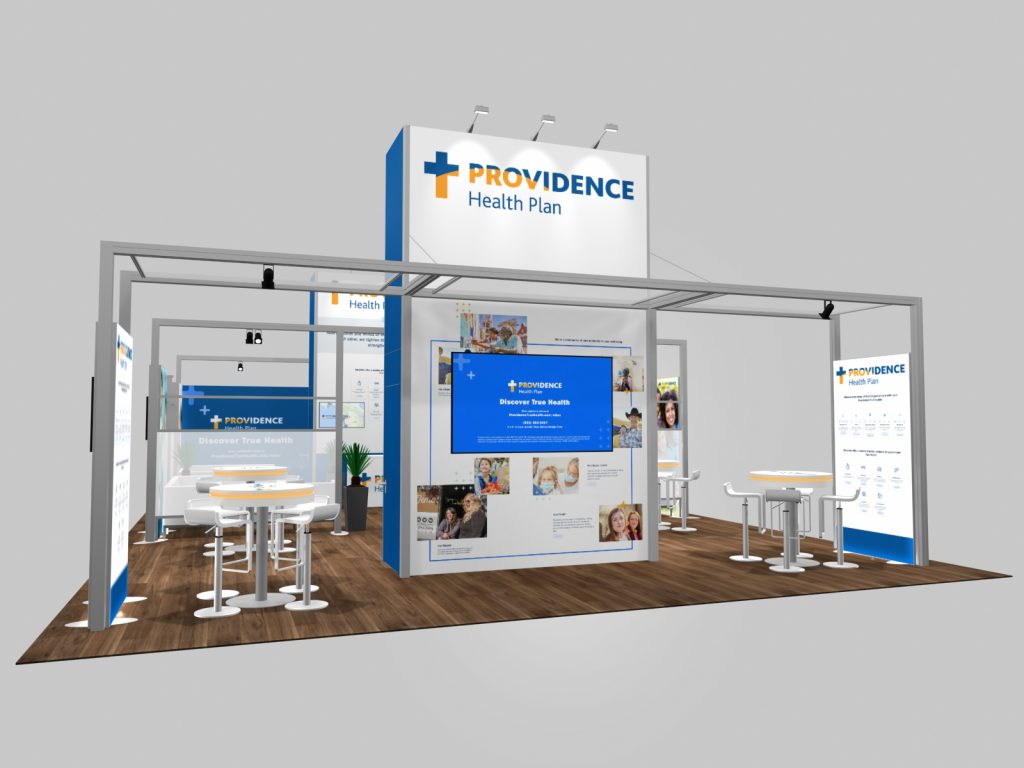
We all know the expression, “If you fail to plan, then plan to fail.” Which, if we’re honest, isn’t always true. Some projects don’t require much planning. Trade shows, and in particular trade show marketing and exhibition, do require careful and systematic planning to be successful.
Yet, there are companies that devote less time to their trade show planning than they would to a 4-year-old’s birthday party.
It’s nuts… especially when you consider the cost of trade shows and the lost opportunities when trade show planning is handled haphazardly. But you’re not that person, right? You want your trade show program to be professional and financially successful, which is why you’re reading this article.
The Importance of Trade Show Planning
Trade show planning is crucial for businesses to maximize their return on investment (ROI) or return on objectives (ROO). A clear and comprehensive plan ensures that companies maximize their sales opportunities while minimizing costs (and stress).
Any “live event” can be unpredictable and trade shows are no exception. However, what’s often described as “unpredictable” by some exhibitors, like shipping, labor, or show services, is more often the result of poor planning. Everyone and every company that provides services to exhibitors understands that communicating deadlines, pricing, timelines, and expectations makes everyone’s job easier. They don’t want surprises any more than you do.
Regarding what size exhibit to buy or rent, as a general rule, a 10 x 10 booth is sufficient for a small business. At 100 square feet, you can accommodate at least four people at once, two staffers and two attendees. Consider a 10 x 20 for a medium business and islands for a larger business. The size of the booth, however, depends on your goals and products. At a trade show, size matters, but it should complement, not dictate your exhibit marketing goals.
Trade Show Event Planning: The Basics
Assign one person to be in charge of timetables and scheduling. Assign another person to draw up the trade show budget and define the marketing goals. This person will have to account for the cost of renting or buying a booth, the cost of accessories such as literature racks, as well as travel expenses. Travel expenses will vary depending on the location and duration of your stay. If you decide to rent, you should expect to budget:
- 25% on renting your booth space
- 20% on design and graphics
- 15% on electrical, cleaning, and drayage
- 10% on shipping materials to and from the trade show
- 10% on press kits and pre-show promotions
- 20% on staffing, travel, and other miscellaneous expenses
If you decide to purchase an exhibit, you will want to work with a professional exhibit designer. Most exhibit distributors have a designer on staff or rely on their exhibit manufacturer to supply design and rendering services. You will need to follow the rules and regulations on booth design for your particular show as well as observe basics such as fire, electrical, and safety codes and provide wheelchair accessibility. Rely on your exhibit designer who understands these requirements.

Trade Show Planning Guide: Key Steps to Success
By investing in comprehensive trade show planning, businesses can maximize their chances of achieving their goals, generating new leads, building brand awareness, and securing new business opportunities.
Define Clear Goals and Objectives: Without clear goals, it’s impossible to measure the success of a trade show participation. Thorough planning helps identify specific objectives, such as generating leads, increasing brand awareness, or launching new products.
Develop a Strategic Budget: Trade shows can be costly, so creating a detailed budget is essential to avoid overspending. Planning allows for accurate budgeting for booth space, staff expenses, travel, accommodation, and marketing materials.
Design an Engaging Booth: The booth is the company’s face at the trade show, so it needs to be visually appealing, informative, and functional. Planning ensures that the booth design aligns with the brand message and effectively attracts visitors.
Prepare a Pre-Show Marketing Campaign: Trade show success often hinges on pre-show marketing efforts. Planning allows for strategic campaigns to generate interest, drive traffic to the booth, and schedule appointments with potential customers.
Train Your Staff: Trade show staff should be knowledgeable about the company’s products or services and well-prepared to engage with visitors. Planning ensures that staff is trained on sales techniques, lead capture methods, and answering common questions.
Establish Lead Capture and Follow-Up Systems: Effective lead capture is crucial for converting trade show interactions into future business opportunities. Planning involves setting up systems to capture leads digitally or on paper and establishing a follow-up process to nurture those leads.
Measure and Evaluate Results: After the trade show, it’s important to evaluate the results and identify areas for improvement. Planning facilitates the collection of relevant data, such as lead generation, booth traffic, and customer interactions, to measure the success of the event.

Leveraging a Trade Show Planning Checklist
Strategy and details drive trade show success. For new exhibitors, the details (and the steps) can be just as opaque as the terminology. Fortunately, there are handy online tools for creating a trade show checklist.
Having a checklist also ensures nothing gets forgotten or overlooked, which can and will happen to new exhibitors. There are big “Oh No’s!” like not scheduling freight to and from the show, booking labor to install and disassemble your exhibit, and forgetting to purchase flooring. Then there are the “Oh Darn!” tasks like not including cleaning supplies in the case/crate, sending literature at the last minute, or not ordering lead retrieval until you arrive at the show.
Preliminary items on your checklist should include:
- Exhibition goals and strategy
- Budget
- Departmental responsibilities
- Show date(s) and due dates for ordering services
- Exhibit design meeting(s)
- Graphic design meeting(s)
- Identifying booth staffing and responsibilities
- Booking travel and lodging
- Creating pre-show, show, and post-show marketing/sales plans, including sponsorships, mailings, invitations, and in-booth events.
- Designing and ordering promotional materials and giveaways
- Scheduling freight to and from the show
Understanding the Role of a Trade Show Planner
Start by assigning someone as the “master trade show planner.” They don’t have to make every decision, but they do have to own the list, including additions, revisions, and due dates. In other words, someone has to be the adult about your trade show planning.
Having a Trade Show Checklist and a Master Planner will ensure you maximize your budget. They will remind the team to book travel, lodging, freight, and promotional materials. In addition, they will complete the show forms during the early bird dates.
For many trade show rookies (and experienced freight professionals), trade show logistics can be confusing. Convention centers, general contractors, and even shippers treat trade show freight, whether LTL or UPS, a little differently. To avoid any missteps, be sure to review the shipping guidelines carefully in the show’s exhibitor handbook and click on the trade show logistics link in this paragraph for a deeper dive in the do’s and don’ts.
Finally, trade shows are stressful and stress is the exact opposite of what you want during a show. Fortunately for the Master Planner, with each passing show, trade show checklist management becomes easier – and it’s not because the number of tasks gets shorter. Knowledge and experience make the job easier. Completing the electrical form, which gave you hives, takes minutes instead of hours. And, after a few hiccups, you understand when to schedule I&D labor vs. rigging vs. flooring. You’ve done the trade show choreography and every move, every step has a logic that seemed utterly random before.
Trade Show Management: Ensuring a Smooth Experience
Who is trade show management? It’s less straightforward than it appears. At most shows or events, there are three management teams, each with different responsibilities. Knowing who does what will make your life considerably easier if you encounter issues or simply need answers to questions.
Exhibition, Convention, or Show Hall Management: Every exhibit hall or event venue has a team that handles sales and marketing, schedules shows, maintains the facility, and negotiates contracts with unions, food vendors, and janitorial services. They are responsible for the management and success of the building. For smaller shows, meetings, or events, they may even serve as the show management.
Show Management: Whether it’s a local boat show or the annual trade show for the American Cardiology Association, the “show” is owned and managed by a company or an association. They are responsible for everything associated with the show without necessarily handling every activity. For example, they identify the location for the show and negotiate space and services with the facility management. They also contract with a General Show Contractor to handle drayage, electrical, pipe and drape, signage, labor, etc. However, the show management devotes much of their time to marketing the show, developing education sessions, scheduling speakers, creating social events, soliciting sponsors, and registering attendees and exhibitors.
General Show Contractor (GSC); Most exhibitors interact primarily with the General Show Contractor and often confuse the GSC with both Show Management or Show Hall Management. As mentioned before, the GSC handles a variety of functions for exhibitors, depending on the show. These may include moving and storing freight, electrical services, cleaning, labor, sign rigging, rental furniture, and in some cases even renting exhibits. The GSC has a contract with Show Management and when an exhibitor hits a wall resolving a problem with the GSC, they should contact Show Management, who typically has a temporary office in the show hall.
The Exhibitor Advocate: The Exhibitor Advocate is a non-profit advocacy group that provides exhibitors with education, resources, and assistance with trade show challenges. They’re not show management nor are they at the show. Instead, they are a valuable partner who can help exhibitors address challenges and prominent pain points to ensure your events remain a valuable and irreplaceable marketing channel.
The Exhibitor Advocate’s mission is to amplify the voice of exhibitors to ensure the enduring success of exhibitions and events by collaborating with all stakeholders to promote and cultivate open communication, consistent standards, and industry best practices.

Seamless Exhibit Planning with Classic Exhibits!
Successful trade show marketing doesn’t happen by accident. There’s always a strategy and a plan. The key is identifying the right strategy and executing the right plan. For over 30 years, Classic Exhibits has been a reliable source of expertise for new and seasoned trade show marketers.
The Classic Exhibits Distributor Network includes over 200 exhibit houses and display professionals in North America. Find success on the trade show floor with an exhibit that reflects your marketing message. For more information, see www.classicexhibits.com and explore Exhibit Design Search or request a meeting with a Classic Distributor Partner.
Trade Show Planning FAQ
Below are 4 common exhibitor questions related to trade show planning.
1. How early should I start planning for a trade show?
Let’s assume that planning means, at a minimum, deciding to exhibit, the size of the floor space, and the location on the show floor. For most shows, the show organizer requires a commitment soon after the previous show. You don’t have to commit then, but it means you’ll have few options about your booth location.
The exhibit design process should start about six months in advance, even if you already have an exhibit and are only planning tweaks to the structure or the graphics. Waiting almost always leads to higher costs and design compromises.
2. What is the most important part of trade show planning?
Not to sound sarcastic, but it’s the actual planning. Far too many exhibitors treat a trade show as a company vacation. They don’t have a strategy. They miss details and deadlines. They don’t coordinate the sales and marketing teams or involve other departments in the company. Even the C-level executives are often in the dark. As a result, they spend too much money and grumble about the results. Exhibitors who stumble into a trade show rarely leave with positive results.
3. How do I choose the right trade show for my business?
No two businesses are identical. Even businesses that are competitors. If you are unsure about whether to participate in a specific trade show, do the following:
- Go as an attendee before committing to be an exhibitor. Wander the floor, and talk to other attendees about why they attend and their objectives.
- Contact friendly competitors or other exhibitors listed on the show’s website. Contact them about their history and success at the show.
Talk to the show organizer. This may seem obvious, but most potential exhibitors never take the time to ask the show organizer for advice. They know their audience, and they want to show to be successful. They can assist with not only if you should participate, but also how to land running.
4. What should I expect from my exhibit house?
Guidance, knowledge, and support. A trade show professional’s job is to ensure your trade show marketing program is successful. Designing, building, and storing your exhibit are services, important services, but any exhibit house can do that. You should expect more, much more. By tapping into their experience, you’ll sidestep the most common mistakes exhibitors make. Plus, they will share trade show trends, strategies, and vendors.
Tags: Classic Exhibits, Exhibitions, trade show planning, Trade Shows



